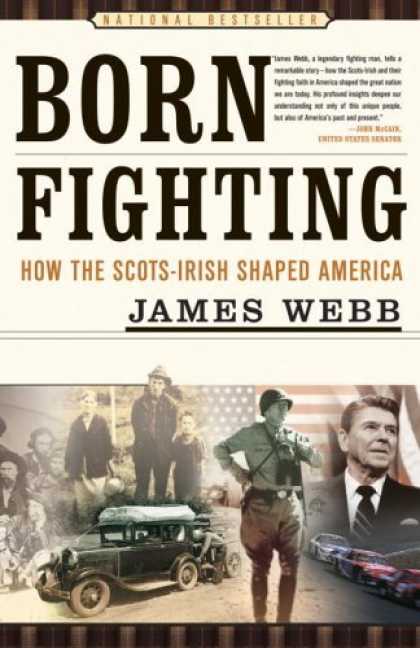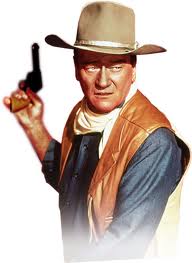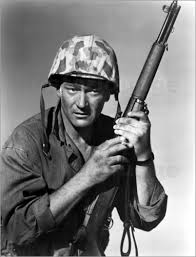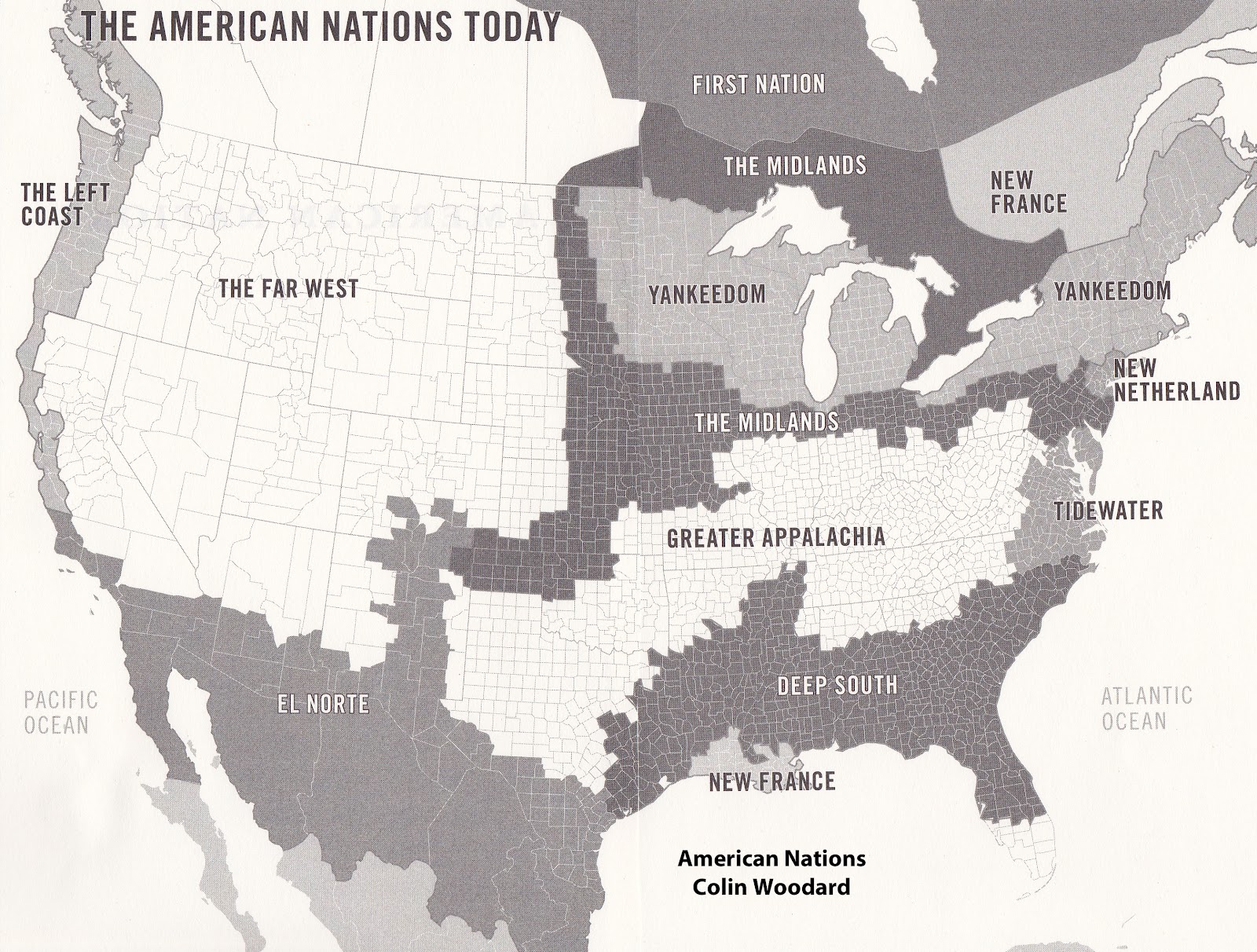 |
Scots-Irish see also History of Scots-Irish Immigration |
 |
The Scotch-Irish are a major ethnic component of the USA's dominant culture, but unique characteristics make this sub-culture difficult for multicultural studies to identify and analyze.
Because of their northern European background, evangelical Protestantism, and cultural and political conservatism, they are often identified with the USA's dominant culture, especially as the "white working class" or as "angry white men" bearing firearms or Confederate flags and listening to hate-radio.
However, the Scotch-Irish have conflicted relations with dominant-culture elites like big-government liberals, educated experts, or corporate conservatives. As a result, Scotch-Irish behavior may resemble that of an emergent minority group defining itself by opposition and a history of grievances and exploitation (though they resist such associations).
A key obstacle to consideration of Scotch-Irish culture in multicultural studies is its lack of a strong or identifiable literary tradition. Books and films by or about the Scotch-Irish are listed below, but these texts may not identify their subjects as Scotch-Irish or be aware of this ethnic group's defining history. (Many people of Scotch-Irish descent don't comprehend the designation's historical meaning and simply assume they're "English," "British," "Scottish," or "Irish.")
Purpose of study: Because Scotch-Irish people and other Americans remain broadly ignorant of Scotch-Irish history and identity, they often identify simply as "just American," and the Scotch-Irish culture becomes the default identity for "real Americans" or "unhyphenated Americans."
If Scotch-Irish identity can be learned and "real / unhyphenated Americans" can be identified as another ethnic group with its own peculiar history of immigration and assimilation, the definition of "What is an American" can become more inclusive of what twenty-first century America actually looks like and comprehend a wider range of cultural values than hatred of government and love of guns, God, and traditional / dysfunctional family values.
For details on Scotch-Irish immgration, see History of Scots-Irish Immigration, but briefly they may be regarded as a third wave of immigration from the British Isles:
Wave 1 (or 2): 1620s-30s Puritan immigration from eastern England to Massachusetts Bay or "New England"; establishment of middle-class commonwealth with spiritual equality and values additional to wealth. > later liberal and progressive traditions promoting middle-class society.
Wave 2 (or 1): 1607 (Jamestown) but mostly 1640s-50s "Cavalier" immigration from southern England to Virginia and other mid-Atlantic colonies; aristocratic society of large plantations with African American slaves instead of European peasants, plus middle-class or working-class whites with smaller holdings. > conservative traditions resisting government direction and regulation of wealth.
Wave 3: 1700s Scotch-Irish immigration from Northern England, Scotland, and Ireland to interiors of mid-Atlantic and southern colonies, esp. foothills, Appalachian Mountains, the Ohio Valley and beyond, where these hardy settlers served as a buffer between Indians and East Coast elites.
| Scotch-Irish originate from the ancient history of the British Isles, esp. the intermixing of Celtic peoples in the North & West with Anglo-Saxon, Scandinavian, and Roman peoples from the South | The Scotch-Irish originate from Northern Britain in the lands surrounding the Irish Sea: Northern Ireland, Scotland, and Northern England |
 Great Britain / the British Isles |
 The Irish Sea (center) was criss-crossed by mostly-Celtic peoples who later migrated to North America |
Where the Scotch-Irish primarily settled
| In North America the Scotch-Irish land on the East Coast but continue migrating into the Appalachians and Ohio Valley, with strong representation in South and Midwest. |
 "Greater Appalachia," from Colin Woodard, American Nations: A History of the Eleven Rival Regional Cultures of North America |
see also Rust Belt maps

If the earlier two waves of British immigration create "two sets of Founders" who establish stable, orderly communities for organizing American life, the Scotch-Irish constitute a somewhat disorderly people who live restlessly under the status quo and make it respond to their needs.
If among the early European settlers the first two waves establish the systems, the Scotch-Irish increasingly become identified with "the people" (as in white people); e.g., the Okies in John Steinbeck's The Grapes of Wrath.
"The people" alternately put their faith in and feel betrayed by the USA's governments and leadership, insisting they're the real America, and to a great extent they have succeeded in creating America in their own image.
John Wayne
(1907-79), American actor
of Scottish, Scotch-Irish, Irish, & English
descent
in two American / Scotch-Irish persona: the cowboy and the soldier,
both armed
 |
 Sands of Iwo Jima (1949) World War 2 military cult film |
The greatest challenge to describing and analyzing the Scotch-Irish immigrant culture or ethnicity is that the terms or standards of analysis are often set by the earlier settlers.
The Scotch-Irish identify racially with the earlier settler elites of New England and Virginia but may express less commitment to education, literacy, and universal rights. (Such differences may be class differences as well as ethnic differences.)
The Scotch-Irish became indispensable to the eastern establishment, filling in the back-country areas and fighting Indians, and later supplying the largest ethnic contingent of soldiers to America's armed forces. The Scotch-Irish also dependably elect white representatives serving the interests of the wealthy and vote against non-white candidates who may more nearly represent the Scotch-Irish class profile.
Besides serving in the military, the Scotch-Irish found economic niches in the South as slave-drivers, and in the Midwest and South as industrial laborers who are work dependably (Protestant work ethic) and are dependably anti-Union (with some temporary exceptions). The poultry, pork-processing, other meat-producing industries, and other low-wage industries find many Scotch-Irish doing hard and dirty work on their assembly lines.
Cultural traits (all judgments open to question, especially since Scotch-Irish operate so invisibly that they may appear anywhere without drawing attention)
Religion: Unlike the Catholic Irish, the Scotch-Irish are overwhelmingly Protestant, and their variety of Protestantism—originally Presbyterian but splitting into hundreds of sects—became the model for much of American Christian fundamentalism and evangelicalism. (Snake-handling cults are almost invariably Scotch-Irish.)
Politics: the Scotch-Irish value liberty or freedom over any benefits from social organizations larger than the family and possibly church or neighborhood, partly explaining their fierce opposition to government and unions and also their commitment to breakaway Protestantism. The Scotch-Irish periodically form ad hoc political organizations, from vigilante groups to the Tea Party or, in the 1990s, Ross Perot's United We Stand America (1992) and Reform Party (1996), but their lack of commitment to political organization normally results in such organizations' decline.
According to James Webb, the Scotch-Irish also organize behind "strong leaders," from Braveheart to Ronald Reagan.
Ethnicity: "White" or "real Americans." Beyond such descriptions, the Scotch-Irish, with their historically low levels of literacy and education, are often ignorant of their ethnic genealogy beyond vague associations with English-speaking ancestors.
![]() The Scotch-Irish sometimes appear
most
alarmed, threatened, or resentful regarding immigration and by equal rights for non-white
minorities (even though rural communities have lower rates of
immigration than cities).
The Scotch-Irish sometimes appear
most
alarmed, threatened, or resentful regarding immigration and by equal rights for non-white
minorities (even though rural communities have lower rates of
immigration than cities).
![]() The Scotch-Irish
suspicion of outsiders
conforms to the Dominant Culture's position of not
assimilating but rather
being assimilated to.
The Scotch-Irish
suspicion of outsiders
conforms to the Dominant Culture's position of not
assimilating but rather
being assimilated to.
![]() On the other hand, the Scotch-Irish culture
(somewhat resembling a traditional culture) shows itself capable of
absorbing difference, usually through extended families and agreement
over shared values. For instance, German immigrants and American Indians
intermarried extensively with the Scotch-Irish, and German immigrant
cultures (especially in the U.S. South) may appear indistinguishable from
the Scotch-Irish.
On the other hand, the Scotch-Irish culture
(somewhat resembling a traditional culture) shows itself capable of
absorbing difference, usually through extended families and agreement
over shared values. For instance, German immigrants and American Indians
intermarried extensively with the Scotch-Irish, and German immigrant
cultures (especially in the U.S. South) may appear indistinguishable from
the Scotch-Irish.
How Scotch-Irish may resemble the USA's dominant culture:
![]() whiteness, though Celtic more than Anglo-Saxon
(cf. W.A.S.P.)
whiteness, though Celtic more than Anglo-Saxon
(cf. W.A.S.P.)
![]() English language already spoken
English language already spoken
![]() individualism (sometimes taken to extremes);
defense of patriarchal nuclear family.
individualism (sometimes taken to extremes);
defense of patriarchal nuclear family.
![]() Protestant (also potentially extreme) +
Protestant Work Ethic.
Protestant (also potentially extreme) +
Protestant Work Ethic.
![]() Scotch-Irish don't
assimilate but expect to be
assimilated to. Those who resist or oppose are "taught a lesson" or "made an
example" through severe punishment.
Scotch-Irish don't
assimilate but expect to be
assimilated to. Those who resist or oppose are "taught a lesson" or "made an
example" through severe punishment.
How the Scotch-Irish may resemble a minority: (Such differences may be class differences as well as ethnic differences.)
![]() Dependence on
traditional / dysfunctional family; traditions of personal and family
honor (cf. "respect" for African
Americans, contrast impersonal justice of dominant culture);
maintenance of distinct gender roles and inequality, esp. via "male privilege."
Dependence on
traditional / dysfunctional family; traditions of personal and family
honor (cf. "respect" for African
Americans, contrast impersonal justice of dominant culture);
maintenance of distinct gender roles and inequality, esp. via "male privilege."
![]() As with
minority groups, mistrust of centralized authority and suspicion
that any stranger expressing interest in your welfare is really out to
get you.
As with
minority groups, mistrust of centralized authority and suspicion
that any stranger expressing interest in your welfare is really out to
get you.
![]() Cultivation of alternative media, e.g. Fox News,
hate radio, alt-right conspiracy theories,
denial of science (evolution and climate change)
Cultivation of alternative media, e.g. Fox News,
hate radio, alt-right conspiracy theories,
denial of science (evolution and climate change)
![]() Distinct musical traditions (Country & Western music derived from
Scotch-Irish border ballads)
Distinct musical traditions (Country & Western music derived from
Scotch-Irish border ballads)
![]() Early marriage and age-at-first-birth,
family instability (despite talk of family values) [but reproduction rates
falling with church attendance]
Early marriage and age-at-first-birth,
family instability (despite talk of family values) [but reproduction rates
falling with church attendance]
![]() Religion over science? (resistance to
Evolution, devotion to fossil fuels, denial of climate change)
Religion over science? (resistance to
Evolution, devotion to fossil fuels, denial of climate change)
![]() Shifting political allegiances: support "New Deal" before Civil Rights Movement;
afterward, anti-government freemarket policies, opposition to social safety
nets, and "politics of resentment."
Shifting political allegiances: support "New Deal" before Civil Rights Movement;
afterward, anti-government freemarket policies, opposition to social safety
nets, and "politics of resentment."
![]()
Texts
Lack of Scotch-Irish ethnic awareness, even by the Scotch-Irish themselves, means that few literary texts announce and defend a Scotch-Irish identity.
This lack of literary development may derive from historically low levels of literacy and education in Scotch-Irish homelands. Especially for Scotch-Irish immigration, the absence of literary texts may owe to the rapid, haphazard, and extended nature of Scotch-Irish immigration across the 1700s.
Histories or Cultural Criticism:
Joe Bageant, Deer Hunting with Jesus: Dispatches from the Class War. Crown, 2007.
David Hackett Fischer, Albion's Seed: Four British Folkways in America. Oxford UP, 1989.
Rory Fitzpatrick, God's Frontiersmen: The Scots Irish Epic.
Henry Ford. The Scotch-Irish in America.
NY: Arno, 1969.
Henry Hofstra Miller. “Searching for a New World: The Background and Baggage of Scots-Irish Immigration” Ulster to America: The Scots-Irish Migration Experience, 1680-1830. Knoxville: U of Tennessee P. 2012.
Barry A. Vann.
In Search of
Ulster Scots Land: The Birth and Geotheological Imagings of a Transatlantic
People,
2008.
Novels / fiction
Dorothy Allison, Bastard Out of Carolina (1992)
William Faulkner, Absalom, Absalom! (1936)
William Faulkner, "The Bear" in Go Down, Moses (1942)
John Steinbeck, The Grapes of Wrath (1939)
John Ehle (1925-2018), The Land Breakers (1964); The Journey of August King (1971); other novels set in Appalachian mountains.
Historical Literature / Memoir
Narrative of the Life of Mrs. Mary Jemison, the White Woman of the Genesee (1824)
Corra Harris (1869-1935), A Circuit Rider's Wife (1910) > film: I'd Climb the Highest Mountain (1951)
J.D. Vance, Hillbilly Elegy: A Memoir of a Family and Culture in Crisis (Harper, 2016); J.D. Vance, Hillbilly Elegy page
Films
Thunder Road (1958; concerning moonshine running in Kentucky, Tennessee)
Norma Rae (1979)
Winter's Bone (2010)
Lawless (2012; moonshine running during Prohibition in Virginia)
Television
King of the Hill (1997-2010)
Duck Dynasty (2012- )
The Heart, She Holler (2011-2014)
Recent essay:
Alec MacGillis & Propublica, "The Original Underclass" Atlantic September 2016
Other possibilities:
James Webb, Fields of Fire (1978); other military novels?
Country & Western music? "Take this Job and Shove It" (1977)
Sports
NASCAR / stock car racing
Monster Trucks
Professional wrestling / Mixed Martial Arts
motorboats over sailboats, motorcycles over bicycles, snowmobiles over skiing (love of fossil fuels)
softball? football? bowling?
hunting and fishing
informal wrestling and racing
Music
Country & Western music derives from the Appalachian mountain settlements by Scotch-Irish immigrants, who brought "border ballads" from the old country.
Celtic music?
Political attitudes: General alienation from political processes, Indifference to Constitutional processes; tendency to conspiracy theories (Jews, witches, liberals, whoever).
Exception: During and after the Great Depression (1920s-30s), Scotch-Irish and other working-class whites supported social-democratic New Deal politics, which
![]() taxed
the wealthy (and everyone, but especially the
wealthy) to support schools, economic development, Social Security, etc.;
taxed
the wealthy (and everyone, but especially the
wealthy) to support schools, economic development, Social Security, etc.;
![]() regulated banks and finance to limit concentrations of wealth in hands of a few;
regulated banks and finance to limit concentrations of wealth in hands of a few;
![]() supported labor unions that gained benefits and wealth-shares for workers.
supported labor unions that gained benefits and wealth-shares for workers.
![]() However, New Deal (including Social Security) was largely
limited to whites, especially in the South.
However, New Deal (including Social Security) was largely
limited to whites, especially in the South.
![]() When
1960s Civil Rights Bills and the War on Poverty extended
governmental assistance and legal protections to minorities, esp. African
Americans, white working class revolted against government, started voting for
small government, tax cuts for wealthy people, deregulation of
banks and finance, and against environmental protection.
When
1960s Civil Rights Bills and the War on Poverty extended
governmental assistance and legal protections to minorities, esp. African
Americans, white working class revolted against government, started voting for
small government, tax cuts for wealthy people, deregulation of
banks and finance, and against environmental protection.
![]() Therefore,
like oppressed minorities, the Scotch-Irish despise participation in self-government except when angry,
then "throw the bums out."
Therefore,
like oppressed minorities, the Scotch-Irish despise participation in self-government except when angry,
then "throw the bums out."
![]() "Politics of resentment."
"Politics of resentment."
![]() Demand respect that comes with whiteness. Respect for
religion. Respect for hard work? But no pity, no help, just jobs.
Demand respect that comes with whiteness. Respect for
religion. Respect for hard work? But no pity, no help, just jobs.
![]()
Born Fighting: How the Scots-Irish Shaped America (2004)
by James Webb
NY: Broadway, 2004.
|
|
Jim Webb (James H. Webb, Jr., b. 1946), a Virginian of Scots-Irish descent and the USA's most decorated Vietnam War Marine, became Secretary of Navy in the 1980s and later a respected novelist of Vietnam War (Fields of Fire [1978] + 5 other military novels) as well as a screenwriter and movie producer. In 2006 Webb was elected U. S. Senator from Virginia but chose not to run for re-election in 2012. (In 2006 Webb ran and won as a Democrat after being a Republican for most of his adult life. He strongly opposed President George W. Bush's war policies.) |
Foreword, xiii-xix
xiv. . . . in the context of recent American politics this is the story of the core culture around which Red State America has gathered and thrived. Its tendency toward egalitarian traditions, mistrust of central authority, frequent combativeness, and an odd indifference to wealth make the Scots-Irish a uniquely values based culture, whose historical journey has been marked by fiercely held loyalties to leaders who will not betray their ideals.
2 Scots-Irish presidents fit profile:
|
Ronald Reagan (1980-88) successful Cold-War president personifying |
 |
-
Andrew Jackson (1828-1836)--Indian fighter, Cherokee Trail of Tears, opposition to powerful federal government, westward expansion

Andrew Jackson (1767-1845; President 1828-1836)
![]() Indian fighter & hero of Battle of New Orleans at end of
War of 1812
Indian fighter & hero of Battle of New Orleans at end of
War of 1812
![]() de-authorized national bank
de-authorized national bank
![]() founded modern Democratic Party
founded modern Democratic Party
![]() first U.S. President
not from Atlantic Coast (Tennessee)
first U.S. President
not from Atlantic Coast (Tennessee)
![]() slave-owner
slave-owner
![]() defied U.S. Supreme Court in forcing Southeast Indians on
Trail of Tears
defied U.S. Supreme Court in forcing Southeast Indians on
Trail of Tears
xv They [the Scots-Irish] were the original Jacksonians (indeed, Andrew Jackson defined them to America), and were among the strongest of the Franklin D. Roosevelt Democrats. Decades later they formed the core of the Reagan Democrats, and with that pendulum swing went the votes of the South over to the Republicans. Karl Rove understood them completely even if he did not overtly identify them ethnically, fashioning many of the emotional and values-based issues that consolidated the power of George W. Bush.
As the twentieth century moved forward toward the twenty-first, the impact of this culture grew, particularly in the military as well as in rural and blue-collar America.
Chapter 1. Big Mocassin Gap
4 [Celtic tribes of middle Europe] . . . did not retreat. But they refused to recognize leadership beyond their local tribes and thus would not become a nation. And they had a permeating discontent that caused the more determined of them to keep pushing, every generation, a little bit farther into the wild unknown.
5 . . . they became the British Empire's greatest voyagers, . . . settling in odd places all around the world. And for that splinter of them that became my people, the Scots-Irish, this meant the Appalachian Mountains, their first stop on their way to creating a way of life that many would come to call, if not American, certainly the defining fabric of the South and the Midwest as well as the core character of the nation's working class.
8 The slurs stick to me . . . . Rednecks. Trailer-park trash. Racists. Cannon fodder. My ancestors. My people. Me.
8 . . . in a society obsessed with multicultural jealousies, those who cannot articulate their ethnic origins are doomed to a form of social and political isolation. My culture needs to rediscover itself, and in so doing to regain its power to shape the direction of America.
Among leading themes:
![]() Most Confederate soldiers were
Scots-Irish
Most Confederate soldiers were
Scots-Irish
![]() Plurality of Union soldiers
and all wars since are Scots-Irish
Plurality of Union soldiers
and all wars since are Scots-Irish
As dominant culture:
Invisible, unmarked, very little attention, but very important
ethnic customs:
clan mentality, family honor, blood relation (clan = tribe)
U. of Virginia website on Scots-Irish primarily in America
Scots emigration / immigration to the US (thanks, Carrie)

map juxtaposes Northern Ireland (lower right) with eastern colonial America (upper left)
![]()
Colin Woodard, American Nations: A History of the Eleven Rival Regional Cultures of North America (2012)
"Greater Appalachia was founded in the early eighteenth century by wave upon wave of rough, bellicose settlers from the war-ravaged borderlands of Northern Ireland, northern England, and the Scottish lowlands....these clannish Scots-Irish, Scots, and north English frontiersmen spread across the highland South and on into the southern tiers of Ohio, Indiana, and Illinois; the Arkansas and Missouri Ozarks; the eastern two-thirds of Oklahoma; and the hill country of Texas, clashing with Indians, Mexicans and Yankees as they migrated."
"Their ancestors had weathered 800 years of nearly constant warfare....Living
amid constant upheaval, many Borderlanders embraced a Calvinist religious
tradition—Presbyterianism—that held that they were God’s chosen people, members
of a biblical nation sanctified in blood and watched over by a wrathful Old
Testament deity. Suspicious of outside authority of any kind, the Borderlanders
valued individual liberty and personal honor above all else, and were happy to
take up arms to defend either."

http://jaymans.wordpress.com/2013/08/14/maps-of-the-american-nations/
|
|
|
w/ links for the Center for Scotch-Irish Studies, the Journal of Scotch-Irish Studies, and the Scotch-Irish Society
From:
White, Craig [mailto:whitec@uhcl.edu]
Sent: Monday, May 14, 2012 8:24 PM
To: Michael Scoggins;
cntrsis@aol.com;
rmacmast@ufl.edu
Cc: White,
Doris
Subject: Inquiry regarding Scots-Irish immigrant narratives
Dear Mr. Scoggins & Drs. Alexander & MacMaster,
This summer and fall I teach graduate and undergraduate
courses on American Immigrant Literature and wondered if you could help me
identify some possible narratives to include by Scots-Irish or Scotch-Irish
writers.
If interested,
here is a link to my graduate course—the website is currently in reconstruction,
but you’ll get an idea of its range:
http://coursesite.uhcl.edu/HSH/Whitec/LITR/5731im/
The last couple times I’ve taught
this content, I’ve offered tentative instruction on Scots-Irish immigration as a
foundation for the USA’s dominant culture. Normally that identity is illustrated
by literature of the Puritans and Pilgrims. Since my Anglo-Texan
students, largely descended from immigrants from Virginia, Tennessee, and other
Southern states, don’t much recognize Puritan values beyond a certain point,
I’ve become sensitized to including some backgrounds on those immigrants from
the British Isles from whom they’re more likely to be descended,
consulting James Webb’s
Born Fighting and maps to
at least explain the Scots-Irish identity, of which a few of my students prove
nominally aware.
But these
lessons make little impression because I provide no texts for
them to read and react to. The Narrative of the Life of Mrs. Mary
Jemison (http://coursesite.uhcl.edu/HSH/Whitec/texts/Amerind/Jemison/JemisonNDX.htm)
features some brief references to this background, and I’ve thought of using a
text like Dorothy Allison’s
Bastard Out of Carolina
(1992), which demonstrates some positive and negative traits of this
culture group but never directly mentions the background—a condition that
appears typical of all later texts if only because the Scotch-Irish
identity is so unknown even to those who bear it.
I’ve installed a link to your center and will review your
journal’s contents but thought I’d start my inquiry with you, as you’re bound to
be familiar with some of the frustrations of Scotch-Irish research. Thanks for
any attention to this inquiry and best wishes to your work.
Craig White
![]()
Prof. Craig,
I apologize for the delay in getting back to you. If I am
interpreting your e-mail correctly, you are looking for first-person
accounts by immigrants of Scotch-Irish ancestry or descendants of that group who
provide some insight into their heritage and what it means to be Scotch-Irish,
at least to them. As you have pointed out, there aren’t that many early
first-person accounts that delve specifically into the Scotch-Irish identity. I
can refer you to a few sources that might be helpful in your curriculum, and
hopefully these will lead you to others.
One source that includes
first-person accounts of the Scotch-Irish settlement of the Shenandoah Valley is
Samuel Kercheval, John Jeremiah
Jacob, and Charles James Faulkner, eds.,
A History of the Valley of Virginia
(1833, 1850; 3rd
ed., rev. and extended, Woodstock, VA: W. N. Grabill, 1902). Another
source that might be helpful, at least as regards South Carolina and the
colonial/Revolutionary War era, is Elizabeth Ellet’s three-volume set
The Women of the American
Revolution (New York: Charles
Scribner, 1853-1854, reprinted several times since). Mrs. Ellet
collected the stories of women from all over the eastern seaboard who
were involved in the Revolution, some first hand, some second hand.
Volume 3 of her trilogy contains a large number of oral
history accounts that were collected by Daniel Green Stinson of Chester County,
SC. Stinson was the son of first-generation Scotch-Irish
immigrants who settled in what is now Chester County, SC prior to the
Revolutionary War. Growing up, he heard stories from the original settlers
about their experiences during the colonial and Revolutionary War period, in a
part of the country that was settled almost exclusively by Scotch-Irish
Presbyterians from Ulster (and a smaller number of Scottish Presbyterians from
lowland Scotland). Stinson never published his research, but he
provided his notes to Mrs. Ellet, who edited them and published them in Volume 3
of her trilogy (which she acknowledged in the introduction to that volume).
There are some similar accounts in Volume 1 of the trilogy, but Volume 3 has the
largest number of accounts describing the lives of these women (and by
extension, their sons, daughters, and husbands), and it is an invaluable
resource for studying this particular time period in the Carolina Piedmont.
I would also recommend the
publications of Dr. Grady McWhiney and Dr. David Hackett Fischer,
who drew on a large number of primary sources for their work. McWhiney published
several scholarly articles in the Journal
of Southern History, including
“Celtic Origins of Southern Herding Practices” (Vol. 5, No. 2, May
1985) and he is the author of Cracker
Culture: Celtic Ways in the Old South
(Tuscaloosa: University of Alabama Press, 1988). His research is more generally
focused on the overall Celtic ancestry of Southerners, which
includes Scottish, Scotch-Irish, Irish, and Welsh, but it is a
good reference for original source material that includes first-person accounts.
Part 4 of Fischer’s monumental study
Albion’s Seed: Four British Folkways in America
(New York: Oxford University Press, 1989), is an invaluable as a source of
references for the settlement of the Southern backcountry by immigrants
from northern Britain and northern Ireland. It also includes detailed
descriptions of the various lifeways that were transported from these areas to
the colonial backcountry, including language and speech. The relevant sections
of both books that deal with literature and speech ways would be good references
for your class and would provide leads for further research.
Much of the information regarding the
history and heritage of the Scotch-Irish, at least in the Carolina Piedmont
where I live, is found in the early histories of the Presbyterian Church
and the Associate Reformed Presbyterian Church. I would recommend Dr.
George Howe’s History of the Presbyterian Church in
South Carolina, Vol. 1 (Columbia, SC: Duffie and
Chapman, 1870), and Dr. Robert Lathan’s History of
the Associate Reformed Synod of the South
(Harrisburg, PA: published for the author, 1882). Both these books have a wealth
of information on the early settlement of the Southern uplands by
Scotch-Irish Presbyterians and Scottish Presbyterians during the 18th
century, and the religious heritage of their descendants into
the 19th
century.
Much of my own
research relates to the Scotch-Irish settlement of the Carolina upcountry and
their involvement in the Revolution. Many of the primary sources that I have
utilized are military records—state audited accounts, federal
pension applications, and memoirs written by veterans of the war and their
descendants. The memoirs in particular might be useful to you as examples of
writing by Scotch-Irish veterans of the war in the late 18th
and early 19th
centuries. If you are interested, I would refer you to my book
The Day It Rained Militia
(Charleston: The History Press, 2005) as a source for many of these accounts
relating to the Scotch-Irish involvement in the Revolution in the
Carolinas.
I hope this information is helpful.
Please feel free to contact me if I can be of further assistance.
Michael C.
Scoggins
Historian,
Culture & Heritage Museums
Research
Director, Southern Revolutionary War Institute
212 East
Jefferson Street
York, SC 29745
Phone
803.684.3948 X31
Fax
803.684.0230

Shenandoah Valley




